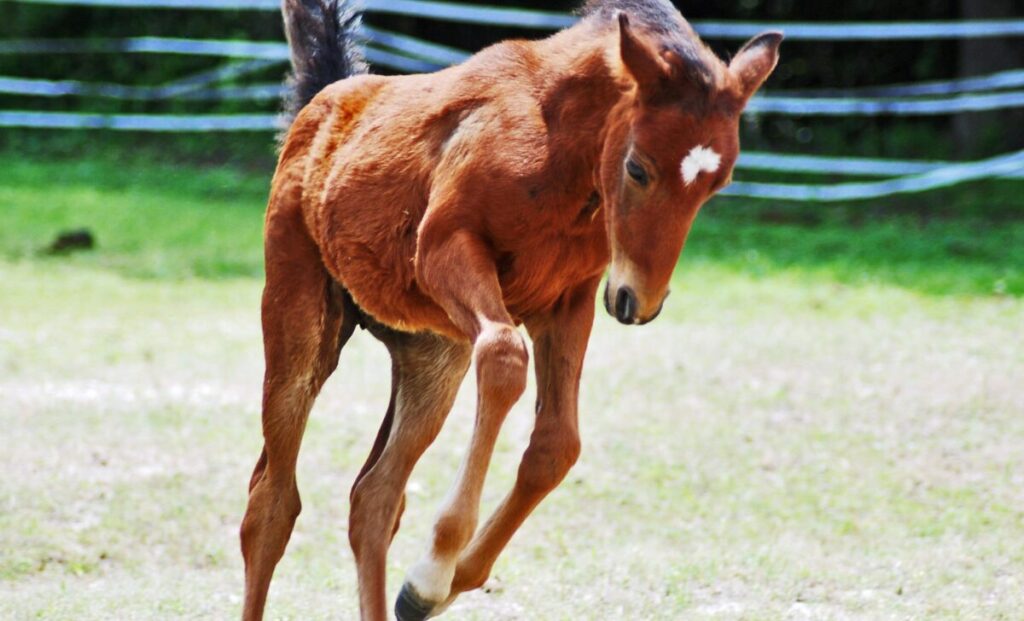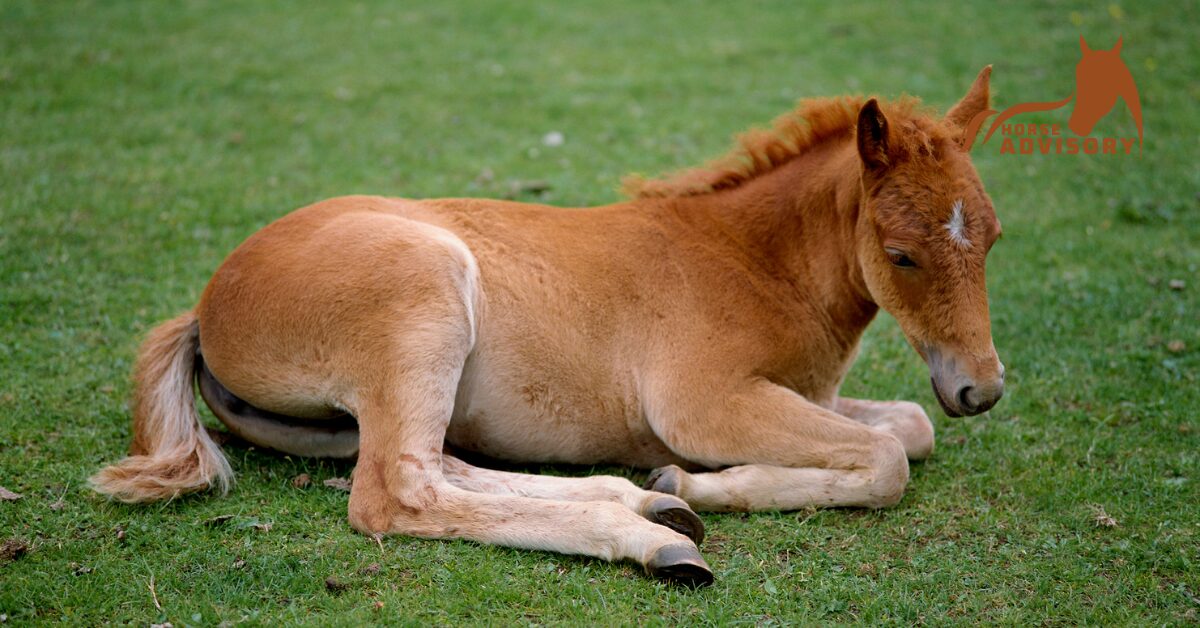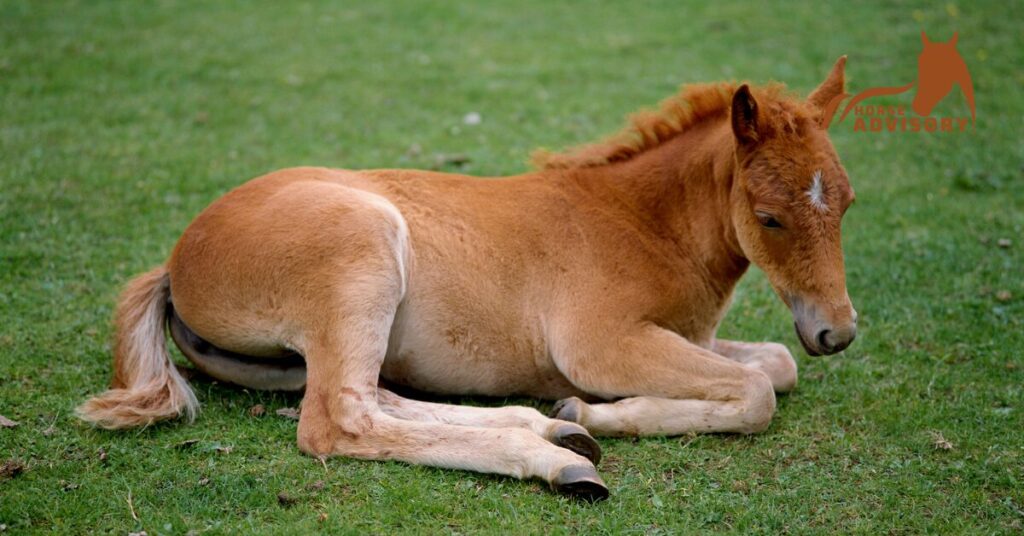Foaling season is an exciting and critical time for breeders and horse enthusiasts, especially when it comes to the majestic Arabian horses. Known for their beauty, intelligence, and agility, Arabians bring a unique experience to the foaling process. This blog post will guide you through what to expect during this crucial period, highlighting signs of impending foaling, the stages of labor, and essential care for both the mare and the newborn foal. We’ll also tackle common challenges and offer practical tips to ensure a safe and successful foaling process.
Signs of Impending Foaling
As foaling season approaches, it’s important to recognize the signs that your Arabian mare is ready to give birth. These signs can appear gradually and may include:
Udder Development
As the mare approaches her due date, her udder undergoes significant changes. The udder will begin to enlarge as it fills with colostrum, the first milk that provides essential nutrients and antibodies to the foal. This process often starts a few weeks before foaling but becomes more pronounced as the mare gets closer to the actual delivery.
Signs to Observe:
- Enlargement: The udder will gradually increase in size, becoming firm and full.
- Fluid Production: Initially, the mare may produce a clear, sticky fluid from her teats. As foaling nears, this fluid will turn into milk, which may appear creamy or slightly yellowish.
- Leakage: Some mares may leak milk intermittently as they get closer to foaling.
Relaxation of Pelvic Ligaments
As the mare’s body prepares for delivery, the pelvic ligaments, which support the pelvis and reproductive organs, will start to loosen and soften. This change helps the birth canal to expand and facilitate the passage of the foal.
Signs to Observe:
- Softening: The area around the mare’s tailhead will become noticeably softer and more relaxed. The ligaments on either side of the tailhead will also become more pronounced.
- Drooping: The tailhead may appear to droop more than usual, and the overall pelvic area will show signs of increased flexibility.
Behavioral Changes
Behavioral changes in mares as they approach foaling can be quite noticeable. These changes reflect the mare’s preparation for labor and the onset of labor.
Signs to Observe:
- Restlessness: The mare may become more restless, pacing, or shifting her weight frequently. This restlessness is due to discomfort and anticipation of labor.
- Frequent Lying Down: She may lie down and get up frequently as her body prepares for delivery.
- Decreased Appetite: A decrease in appetite or a change in eating patterns can occur as the mare’s body focuses on labor.
- Changes in Affection: Some mares may seek more human or herd attention, becoming more affectionate, while others may isolate themselves, preferring solitude.
Waxing
Waxing refers to the appearance of a waxy, often crusty substance on the tips of the mare’s teats. This is a common sign that foaling is imminent, usually occurring within 24-48 hours before delivery.
Signs to Observe:
- Waxy Substance: Look for a waxy or sticky substance forming on the tips of the teats. This substance is the result of changes in the mammary glands as the mare’s body prepares for milk production.
- Timing: Waxing typically occurs just before the onset of labor, so its presence can be a useful indicator of imminent foaling.

Stages of Labor
Understanding the stages of labor can help you provide the necessary support during foaling:
Stage One (Preparation)
Duration:
- 1 to 4 Hours
Stage One is the preparatory phase leading up to active labor. It is characterized by several signs that indicate the mare’s body is getting ready for delivery.
Signs to Observe:
- Discomfort and Restlessness: The mare may exhibit signs of discomfort, such as pacing, frequent lying down and getting up, and shifting her weight. She may also sweat as her body adjusts to the onset of labor.
- Behavioral Changes: Increased restlessness, such as circling or attempting to find a comfortable place, is common. She might also display changes in behavior, such as seeking attention or isolating herself from other horses.
- Abdominal Contractions: Mild contractions may start, and you may notice the mare’s abdomen tightening.
Actions to Take:
- Monitor Closely: Keep a close watch on the mare and her behavior. Ensure she is in a clean, quiet, and safe environment.
- Prepare for Assistance: Have necessary supplies ready, such as clean towels, a clean foaling area, and contact information for a veterinarian.
Stage Two (Delivery)
Duration:
- 15 to 30 Minutes
Stage Two is the active delivery phase, where the foal is born. This stage is usually relatively quick, but timing and progression can vary.
Signs to Observe:
- Water Breaking: The mare’s water will break, signaling that delivery is imminent. You may see a fluid discharge before contractions become more intense.
- Intense Contractions: Contractions will become more forceful and frequent as the mare works to push the foal out. You should see the foal’s front feet and head gradually emerge.
- Foal Presentation: Ideally, the foal should be positioned with its front feet first, followed by its head and body. If you notice any abnormal presentation (e.g., hind feet first), seek veterinary assistance immediately.
Actions to Take:
- Assist if Necessary: Most foalings progress without intervention, but be prepared to assist if needed. Ensure the foal’s airway is clear and gently help with the delivery if the mare requires assistance.
- Keep the Area Clean: Maintain a clean environment to reduce the risk of infection. Use clean towels to help dry and stimulate the foal.
Stage Three (Afterbirth)
Duration:
- 1 to 3 Hours
Stage Three involves the expulsion of the placenta (afterbirth). This stage is crucial for the mare’s recovery and the overall health of the foal.
Signs to Observe:
- Placenta Expulsion: The mare should expel the placenta within 1 to 3 hours after the foal is born. It should come out intact; however, small tears or parts remaining in the uterus may not be uncommon.
- Retention of the Placenta: If the placenta is not expelled within 3 hours, this could indicate a problem and may require veterinary intervention.
Actions to Take:
- Monitor Expulsion: Ensure that the placenta is expelled completely. Retained placenta can lead to serious complications, including infection or uterine inflammation.
- Consult a Veterinarian: If the placenta is retained beyond the expected time or if you notice any signs of infection or distress in the mare, contact a veterinarian promptly.
Care for the Mare and Newborn Foal
Ensuring the well-being of both the mare and foal is paramount:
Post-Foaling Checks
Foal’s Condition:
- Breathing and Airway: As soon as the foal is born, check that it is breathing normally. Clear any fluid from its nostrils or mouth if necessary. Gentle rubbing with a clean towel can help stimulate the foal to start breathing.
- Activity and Alertness: Observe the foal to ensure it is moving and showing signs of alertness. The foal should start to try standing and nursing shortly after birth.
Mare’s Condition:
- Post-Foaling Complications: Monitor the mare for signs of complications, such as excessive bleeding, difficulty in expelling the placenta, or signs of colic. Watch for any signs of distress or unusual behavior.
- Uterine Contractions: Ensure that the mare’s uterus is contracting normally and that the placenta is expelled completely. Retained placenta can lead to serious health issues, including infection.
Nutritional Needs
For the Mare:
- Hydration: Provide the mare with fresh, clean water immediately after foaling. Proper hydration is crucial for milk production and overall recovery.
- Feed: Offer high-quality feed or hay to support lactation and recovery. Ensure that the mare has access to a balanced diet to help her regain strength and support milk production.
For the Foal:
- Colostrum Intake: Ensure the foal receives colostrum (the first milk) within the first few hours of life. Colostrum is rich in antibodies and essential for building the foal’s immune system. If the foal is unable to nurse from the mare, provide a colostrum substitute or supplement.
- Monitoring Nursing: Observe the foal to ensure it is nursing regularly and effectively. This is critical for its growth and health.
Umbilical Cord Care
Handling the Umbilical Cord:
- Natural Detachment: Allow the umbilical cord to break naturally. Do not pull on it or try to cut it prematurely.
- Disinfection: After the cord has broken, clean the navel area with an antiseptic solution to prevent infection. Common disinfectants include iodine or chlorhexidine. Ensure the area remains clean and dry.
Veterinary Examination
Health Check:
- Initial Examination: Schedule a veterinary check-up within 24 hours of foaling. The vet will assess the health of both the mare and foal, checking for any post-foaling complications and ensuring that both are recovering well.
- Vaccinations and Deworming: Discuss with the vet any necessary vaccinations or deworming protocols for both the mare and foal.
Follow-Up Care:
- Monitoring: Continue to monitor both the mare and foal in the days following foaling. Watch for signs of any health issues, such as changes in appetite, behavior, or physical symptoms.
- Regular Check-Ups: Follow up with additional veterinary visits as recommended to ensure ongoing health and development of the foal and recovery of the mare.
Read More: Care Tips for Newborn Arabian Foals
Common Challenges and Solutions
Foaling can present various challenges. Here’s how to address some common issues:
Dystocia (Difficult Birth)
Dystocia refers to difficulties during the birthing process, which can occur if the foal is improperly positioned, if there are multiple foals, or if the mare has physical abnormalities.
Challenges:
- Prolonged Labor: If labor extends beyond the expected time frame, it could indicate a problem with the foal’s position or other complications.
- Incorrect Presentation: Foals should ideally be presented with their front feet and head first. Abnormal presentations, such as breech (hindquarters first) or transverse (sideways), can complicate delivery.
Solutions:
- Veterinary Assistance: If labor is prolonged or if you suspect an abnormal presentation, contact a veterinarian immediately. They can assess the situation and, if necessary, perform manual adjustments or a cesarean section.
- Monitor Closely: Keep a close watch on the mare during labor, noting any signs of distress or abnormal progress. Quick intervention can be crucial in preventing further complications.
Retained Placenta
A retained placenta occurs when the placenta does not expel naturally within the expected time frame (usually 1 to 3 hours after foaling). This condition can lead to serious complications, including infection (metritis) and laminitis.
Challenges:
- Infection Risk: A retained placenta increases the risk of uterine infection, which can affect the mare’s overall health and fertility.
- Health Implications: Prolonged retention can also impact the mare’s recovery and potentially lead to laminitis.
Solutions:
- Prompt Veterinary Care: Seek veterinary assistance if the placenta is retained beyond 3 hours. The vet may administer medications to help expel the placenta or perform manual removal if necessary.
- Monitor and Care: Ensure the mare remains comfortable and monitor her for signs of infection, such as fever or a foul-smelling discharge. The vet may also recommend antibiotics or anti-inflammatory medications.
Weak Foals
Some foals may be born weak or lethargic, which can affect their ability to stand, nurse, and thrive. This can be due to factors such as premature birth, poor nutrition during gestation, or complications during birth.
Challenges:
- Difficulty Standing: Weak foals may struggle to stand or move, which can delay their ability to nurse and receive essential colostrum.
- Poor Nursing: Difficulty in nursing can lead to inadequate intake of colostrum, which is crucial for the foal’s immune system.
Solutions:
- Warm, Safe Environment: Provide a warm, quiet, and safe environment for the foal. Ensure that the foal is in a clean, dry area to help regulate its body temperature and avoid additional stress.
- Assistance with Nursing: Gently assist the foal in standing and finding the mare’s udder if needed. If the foal is unable to nurse, you may need to provide colostrum via a bottle or stomach tube. Consult your vet for guidance on proper feeding techniques and supplementary colostrum options.
- Veterinary Evaluation: If the foal remains weak or shows signs of distress, consult a veterinarian immediately. The vet can assess for underlying health issues and provide appropriate treatments, such as intravenous fluids or additional nutritional support.
Unique Aspects of Arabian Horses
Arabian horses are celebrated for several distinctive traits that make them exceptional and beloved within the equine community. Understanding these unique aspects can help breeders and owners provide optimal care and training.
Resilience and Vitality:
- Quick Adaptation: Arabian foals are known for their impressive vitality and resilience. They often show remarkable energy and activity shortly after birth, which reflects the breed’s natural robustness. This early vigor can be advantageous as foals adapt quickly to their environment and begin to thrive.
- Strong Health: Arabian horses generally have a strong constitution and are less prone to certain health issues compared to other breeds. Their ability to bounce back quickly from the stresses of birth is a testament to their overall hardiness.
Social Instincts:
- Interactive Nature: Arabians are known for their strong social instincts and can be highly interactive with humans. This trait makes them more amenable to early handling and training. They often form strong bonds with their caretakers and respond well to positive reinforcement and consistent, gentle training methods.
Elegant Appearance and Disposition:
- Distinctive Traits: The Arabian breed is renowned for its distinctive physical features, such as a refined head, large expressive eyes, and a high tail carriage. Their graceful movement and compact build contribute to their unique presence.
- Intelligent and Alert: Arabians are often noted for their intelligence and alertness. They tend to be quick learners and can excel in various disciplines with appropriate training and care.
Practical Tips for Breeders and Owners
To ensure the best possible outcome for both the mare and foal, it’s essential to follow these practical tips:
Prepare the Foaling Area:
- Clean and Spacious Stall: Set up a foaling stall well in advance of the due date. Ensure it is clean, spacious, and free from drafts. Use soft bedding, such as straw or shavings, to provide a comfortable and safe environment for the mare and her newborn foal.
- Accessibility: Make sure that the foaling area is easily accessible and that you can quickly reach the mare if she needs assistance. Have all necessary supplies, such as clean towels, iodine for the umbilical cord, and emergency contact numbers, readily available.
Monitor Closely:
- Foaling Cameras and Alarms: Utilize foaling cameras or alarms to monitor the mare, especially as she nears her due date. These tools can provide real-time alerts and allow you to observe the mare’s condition from a distance, ensuring that you are ready to assist if necessary.
- Regular Checks: Perform regular checks on the mare as the foaling date approaches. Look for signs of impending labor and make sure that she is comfortable and in good health.
Stay Calm and Prepared:
- Experienced Assistance: Have an experienced person, such as a knowledgeable breeder or veterinarian, on standby to assist if needed. Their experience can be invaluable in managing any complications that may arise.
- Emergency Supplies: Ensure that you have all necessary supplies on hand, including a first aid kit, clean towels, and any medications or equipment recommended by your veterinarian.
- Calm Demeanor: Approach the foaling process with a calm and prepared attitude. Your demeanor can help reduce stress for both the mare and foal, creating a more positive experience for everyone involved.
By understanding the unique aspects of Arabian horses and following these practical tips, breeders and owners can provide exceptional care and support during the foaling process, ensuring the well-being and success of both mare and foal.
Conclusion
Foaling season is a remarkable time that requires preparation, knowledge, and care. By understanding the signs of impending foaling, being aware of the labor stages, and knowing how to care for the mare and foal, you can ensure a safe and rewarding experience. Embrace the unique aspects of Arabian foaling, and take pride in welcoming a new generation of these magnificent horses into the world.





